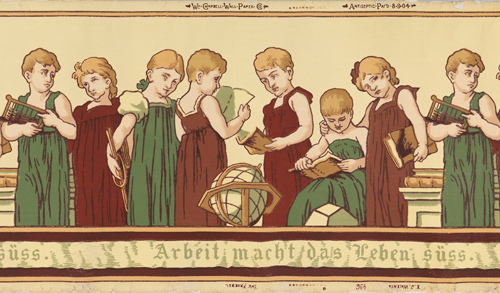This Object of the Day celebrates one of many treasured objects given by Clare and Eugene V. Thaw to Cooper Hewitt, Smithsonian Design Museum. It is republished here in memory of Eugene V. Thaw. Click on this link to read more about the Thaws and their gifts to Cooper Hewitt. This polychrome interior hides architectural, visual,...
This polychrome interior hides architectural, visual, and historic secrets. The drawing depicts the bedroom of King Pedro IV in the Palace of Queluz in the municipality of Sintra, just west of Lisbon. The Palace was originally constructed in the eighteenth century under King Pedro III as a summer home. It remained within the Portuguese royal family...
Whether you call it a dressing table or a vanity, during the 1930s and 1940s this furniture form expressed the glamour and mystique of femininity. A woman sitting at her vanity—preparing to go out or to entertain in her home—connotes the vanity’s cultural associations with beauty, self-image, and preparation. Designed by Gilbert Rohde for Herman...
I was lucky enough to have lived with Tommi (Anton) Parzinger furniture as a teenager. I was raised in a modern house, and my mother worked with an interior designer who ordered several Parzinger pieces, a brass-studded sideboard, a brass chandelier and a coffee set. Today my sister has the sideboard and I have the...
The Hôtel de Soubise is a familiar sight for many researchers of French history. Located at 60 rue des Francs-Bourgeois in the 3rd Arrondissement, the building is now used as one of the main branches of the French National Archives. This drawing after the French architect Germain Boffrand (1667- 1754) shows an elevation of the...
The early years of the twentieth century were the high point in children’s room decoration. The Industrial Revolution brought about increased wealth, and children were given their own rooms for the first time. The decoration of a child’s room was supposed to be stimulating and educational, and needed to clearly designate the space as belonging...





